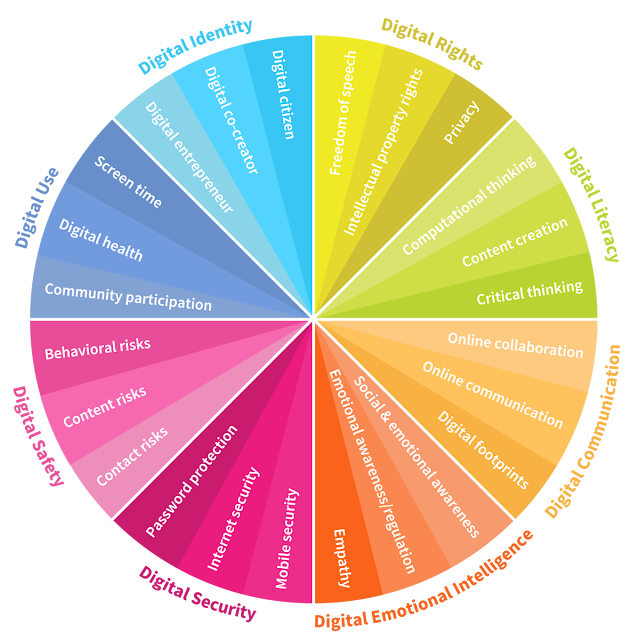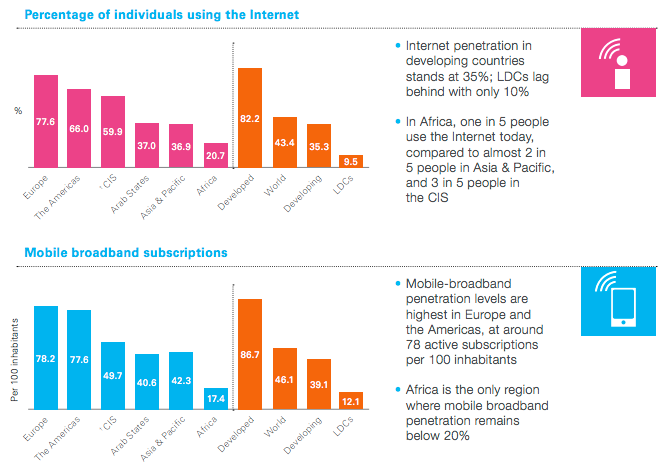8 digital skills we must teach our children
The social and economic impact of technology is widespread
and accelerating. The speed and volume of information have increased
exponentially. Experts are predicting that 90% of the entire population
will be connected to the internet within 10 years. With the internet of things,
the digital and physical worlds will soon be merged. These changes herald
exciting possibilities. But they also create uncertainty. And our kids are at
the centre of this dynamic change.
Children are using digital technologies and media at
increasingly younger ages and for longer periods of time. They spend an
average of seven hours a day in front of screens – from televisions and
computers, to mobile phones and various digital devices. This is more than the
time children spend with their parents or in school. As such, it can have a
significant impact on their health and well-being. What digital content they
consume, who they meet online and how much time they spend onscreen – all these
factors will greatly influence children’s overall development.
The digital world is a vast expanse of learning and
entertainment. But it is in this digital world that kids are also exposed to
many risks, such as cyberbullying, technology addiction, obscene and violent
content, radicalization, scams and data theft. The problem lies in the fast and
ever evolving nature of the digital world, where proper internet governance and
policies for child protection are slow to catch up, rendering them ineffective.
Moreover, there is the digital age gap. The way children use
technology is very different from adults. This gap makes it difficult for parents
and educators to fully understand the risks and threats that children could
face online. As a result, adults may feel unable to advise children on the safe
and responsible use of digital technologies. Likewise, this gap gives rise to
different perspectives of what is considered acceptable behaviour.
So how can we, as parents, educators and leaders, prepare
our children for the digital age? Without a doubt, it is critical for us to
equip them with digital intelligence.
Digital intelligence or “DQ” is the set of social,
emotional and cognitive abilities that enable individuals to face the
challenges and adapt to the demands of digital life. These abilities can
broadly be broken down into eight interconnected areas:
Digital identity: The ability to create and
manage one’s online identity and reputation. This includes an awareness of
one's online persona and management of the short-term and long-term impact of
one's online presence.
Digital use: The ability to use digital devices
and media, including the mastery of control in order to achieve a healthy
balance between life online and offline.
Digital safety: The ability to manage risks
online (e.g. cyberbullying, grooming, radicalization) as well as problematic
content (e.g. violence and obscenity), and to avoid and limit these risks.
Digital security: The ability to detect cyber
threats (e.g. hacking, scams, malware), to understand best practices and to use
suitable security tools for data protection.
Digital emotional intelligence: The ability to
be empathetic and build good relationships with others online.
Digital communication: The ability to
communicate and collaborate with others using digital technologies and media.
Digital literacy: The ability to find, evaluate,
utilize, share and create content as well as competency in computational
thinking.
Digital rights: The ability to understand and
uphold personal and legal rights, including the rights to privacy, intellectual
property, freedom of speech and protection from hate speech.
Above all, the acquisition of these abilities should be
rooted in desirable human values such as respect, empathy and prudence. These
values facilitate the wise and responsible use of technology – an attribute
which will mark the future leaders of tomorrow. Indeed, cultivating digital
intelligence grounded in human values is essential for our kids to become
masters of technology instead of being mastered by it.





Comments